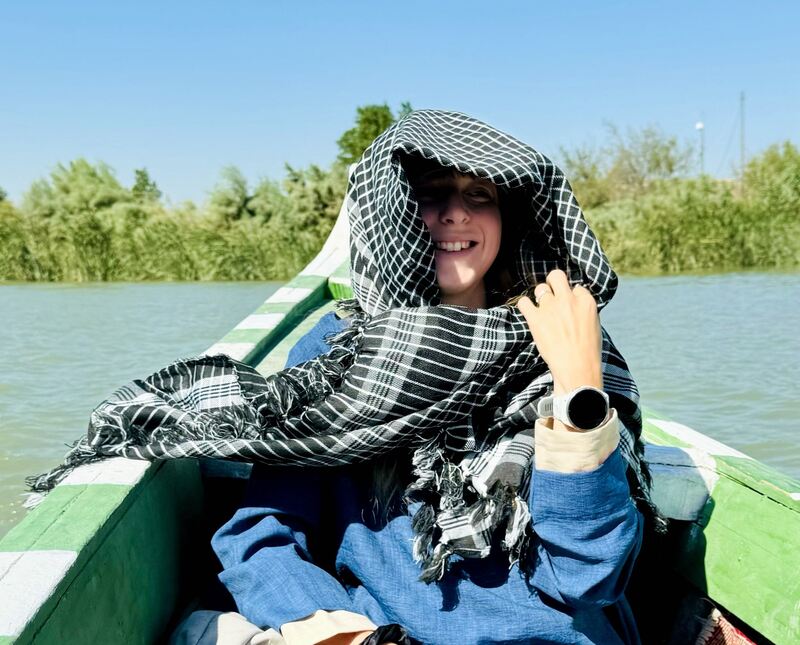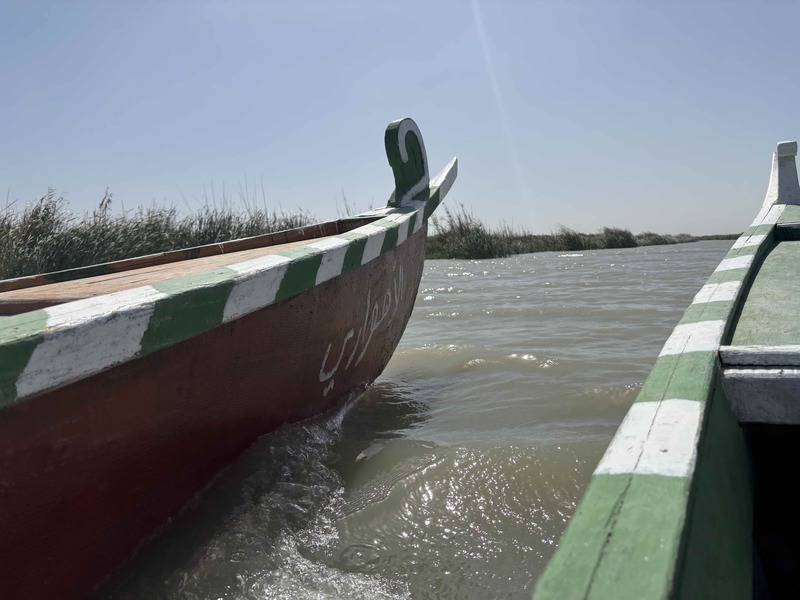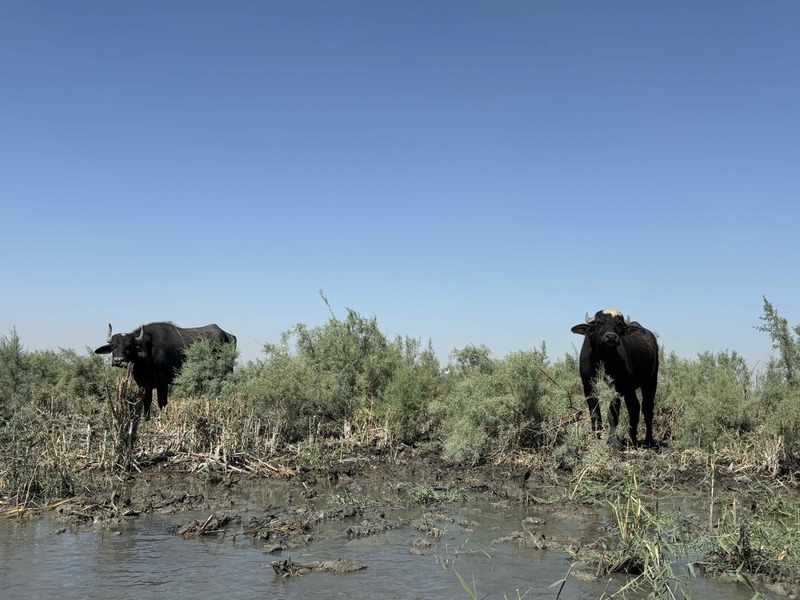The Iraqi Marshes are more than Iraqis hidden gem. This is where you can find some amazing wildlife, rich culture with ties to the wetland.
The marshes in Iraq, also known as the Iraqi Marshes, are an incredible wetland ecosystem in the Middle East.
One of the most extraordinary wetland ecosystems in the Middle East, actually. Home to both animals (water buffalo) and people (marsh Arabs), a visit to the marshes in Iraq is well worth it.
These marshes are located in the south of the country.
You’ll find them between the Tigris and Euphrates rivers, stretching over parts of the provinces of Basra, Maysan, and Dhi Qar.
They’re most easily accessible for those visiting Iraq through Basra.
The Iraqi marshes have incredible biodiversity, but it’s not just animals and plant life you’ll find here.
It’s people, too, who have lived off these lands for thousands of years.
The marshes are home to a deep-rooted culture and community of people - the Marsh Arabs. This is a community of people whose lives are deeply tied to water, reeds, and water buffalo.
Let’s explore more.
What are the Iraqi Marshes?
Marsh Arabs and Traditional Life
Water Buffalo in the Marshes
A Marsh History
Wildlife and Biodiversity of the Iraqi Marshes
Visiting the Marshes in Iraq Today

What are the Iraqi Marshes?
There are three main areas of the marshes in Iraq: The Hammar Marshes, the Hawizeh Marshes, and the Central Marshes.
When you put them together, they actually form the largest wetland in the Middle East.
Once upon a time, they were maybe some of the most extensive in the world.
The area the marshes cover has changed over time. Political factors, as well as environmental and economic factors, have affected this.
But previously, they’re said to have covered around 20,000 square kilometres.
You may be wondering… Iraq - the Middle East - isn’t it all desert?
Well, yes - and no.
The marshes in Iraq live in a fragile state. They survive on being fed by annual flooding from the Tigris and Euphrates rivers. The ecosystem is therefore a very fragile one.
Without this annual flooding, the wetlands would dry up.
Marsh Arabs and Traditional Life
The Marsh Arabs are officially known as the Ma’dan. They are the indigenous people of the marshes.
Their culture is unlike any other in Iraq.
Traditionally, they live in reed houses called mudhif. Such reed houses are built entirely from local reeds harvested from the water.
These houses often have arched roofs and are constructed without nails or screws. Living completely from nature and the surrounding wetlands.
Daily life revolves around the marshes.
People navigate the waterways in boats. These are similar to canoes and go by the local name of mashoof. The mashoof boats are made by hand and can be as small as a kayak or as large as a floating living room.
The marsh Arabs will also utilise the reeds for building anything else needed. Reed gathering is important for their survival. These reed beds can grow over 3 metres tall!
Enough to form natural walls that hide entire villages.
For food, they rely on fishing and buffalo.

Water Buffalo in the Marshes
Many Marsh Arab families keep water buffalo as part of their households. The animals are used for milk and other dairy products, like ghee and yoghurt. Their milk is often turned into a thick clotted-cream-like substance called ‘geymar’, which is a breakfast staple in Iraq.
Less often but occasionally, they’re used for meat.
Water buffalo are central to life in the marshes and are often considered members of the family in many cases. They’re even sometimes given names and spoken to as if they understand human language.
Plus, they have the important task of helping to keep mosquito populations down by stirring up water as they walk around!
The humid, wet conditions make it an ideal habitat for the water buffalo, who love the water.
Buffalo are known to prefer floating and sleeping half-submerged in water.
Some say that you can tell the time of day based on when the buffalo decide to head into or out of the water…!
A Marsh History
1990s
During the 1990s, the marshes in Iraq nearly disappeared.
Following uprisings in the south of Iraq after the Gulf War, Saddam Hussein’s regime drained the marshes as a form of political punishment.
Massive drainage canals were dug, and water was diverted away.
The result was the collapse of the marsh ecosystem. It displaced the Marsh Arabs and destroyed the natural habitat of countless birds, fish, and animals.
Early 2000s
By the early 2000s, only about 10% of the original marshland remained.
2003 onwards
Since 2003, efforts to restore the marshes of Iraq have been underway.
Local communities, international environmental groups, and the Iraqi government have worked to re-flood and revive the area.
Some marshes have come back to life.
Birds have returned. So have the buffalo. Tourists now come to take boat rides, photograph water lilies, and explore reed villages.
2016
In 2016, UNESCO declared the Iraqi Marshes a World Heritage Site.
Wildlife and Biodiversity of the Iraqi Marshes
The Iraqi marshes are an absolute haven for wildlife.
Birds
They are one of the last stopover points for millions of migratory birds. The types of birds include pelicans, flamingos, and storks.
Fish
You can find fish such as barbel and catfish.
Other Animals
The marshes are rumoured to have once been home to leopards and otters. You may be able to still spot the rare duck ‘marbled teal’. Or the ‘Basra reed warbler’. This is found almost nowhere else on Earth.

Visiting the Marshes in Iraq Today
Today, it is possible to visit the marshes in Iraq.
The best access is from the cities of Nasiriyah or Amarah.
You’ll need a local guide who can take you into the wetlands to see traditional reed houses, water buffalo, and flocks of birds. As well as to introduce you to the locals. You can try local food made with buffalo milk and freshly caught fish.
The best time to visit is in the cooler months, between November and March, when temperatures are milder. During these times, birdwatching is at its peak.
Make sure to take a ride on one of the traditional boats.
You can even look at staying overnight in one of the traditional reed houses. You’ll live like the local marsh Arabs do, enjoying traditional food and a night under the stars and the peace of the marshes.